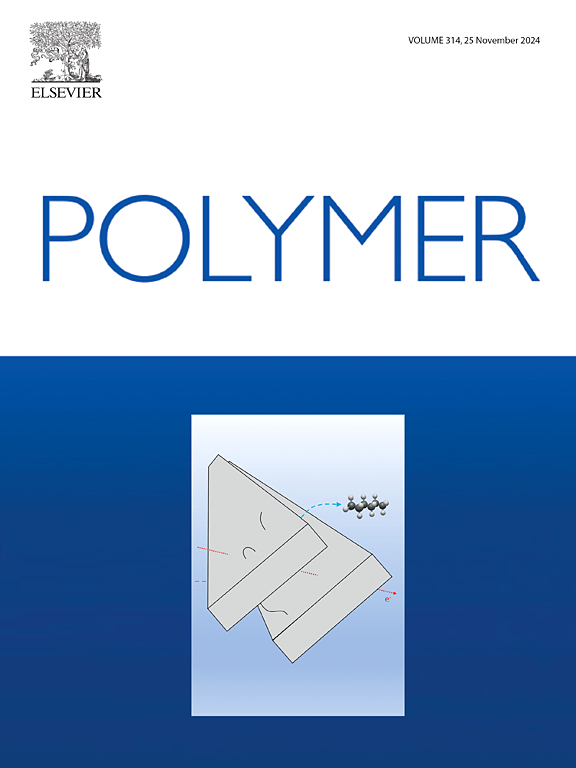具有分层松散孔的中空纤维处理纺织废水
IF 4.1
2区 化学
Q2 POLYMER SCIENCE
引用次数: 0
摘要
中空纤维膜(HFM)在废水净化中得到了广泛的应用。纳米孔膜对染料分子具有较高的吸附性,但存在高通量与吸附性矛盾的问题。本研究将非溶剂诱导相分离(NIPS)与聚合物发泡耦合,在中空海绵纤维(HPF)中构建发泡层。空腔形成的边界条件与产生的CO2扩散密切相关。根据相图的理论分析,气体扩散的增加促进了瞬时脱混。热力学不稳定性的增强有利于CO2的成核和生长,导致分层细胞结构。CO2气泡扩散打破了富凝胶相的自由屏障,在每个细胞壁上实现了相互连接的纳米孔。这种位于泡沫层上的海绵状纳米孔为染料分子提供了吸收位点,对染料产生了一层一层的吸收和拦截作用。制备的HPF膜具有较高的染料去除率(< 98.2%)和对罗丹明b的高通量(24.4 L m−2h−1)。提出的气泡成核和相分离耦合原理将有助于设计具有孔隙优化的高性能HPF膜。本文章由计算机程序翻译,如有差异,请以英文原文为准。

Hollow fiber with hierarchical loose cellular pores for treating textile wastewater
Hollow fiber membrane (HFM) has been widely used to purify waste dye water. The nanoporous skin of HFM usually provided high rejection to dye molecules, however, it suffered from the problem of conflict between high flux and rejection. In this study, a foaming layer was constructed in hollow spongy fiber (HPF) via coupling the non-solvent induced phase separation (NIPS) with polymer foaming. The boundary condition of cavity appearance was closely related with generated CO2 diffusion. Based on theoretical analysis of phase-diagrams, the increased gas diffusion promoted instantaneous demixing. The enhanced thermodynamic instability would benefit CO2 nucleation and growth, resulting in hierarchical cellular structure. CO2 bubble diffusion broke the free barrier of gel rich-phase, achieving interconnected nanopores on each cell wall. This spongy nanopores located on foaming layers provided absorption sites for dye molecules, generating a layer by layer absorption and interception effect to dye. The as-prepared HPF membranes exhibited a high dye rejection (<98.2 %) and a high flux (24.4 L m−2h−1) to Rhodamine B. This proposed coupling principles of bubble nucleation and phase-separation would help to design high-performance HFM with pores optimization.
求助全文
通过发布文献求助,成功后即可免费获取论文全文。
去求助
来源期刊

Polymer
化学-高分子科学
CiteScore
7.90
自引率
8.70%
发文量
959
审稿时长
32 days
期刊介绍:
Polymer is an interdisciplinary journal dedicated to publishing innovative and significant advances in Polymer Physics, Chemistry and Technology. We welcome submissions on polymer hybrids, nanocomposites, characterisation and self-assembly. Polymer also publishes work on the technological application of polymers in energy and optoelectronics.
The main scope is covered but not limited to the following core areas:
Polymer Materials
Nanocomposites and hybrid nanomaterials
Polymer blends, films, fibres, networks and porous materials
Physical Characterization
Characterisation, modelling and simulation* of molecular and materials properties in bulk, solution, and thin films
Polymer Engineering
Advanced multiscale processing methods
Polymer Synthesis, Modification and Self-assembly
Including designer polymer architectures, mechanisms and kinetics, and supramolecular polymerization
Technological Applications
Polymers for energy generation and storage
Polymer membranes for separation technology
Polymers for opto- and microelectronics.
 求助内容:
求助内容: 应助结果提醒方式:
应助结果提醒方式:


